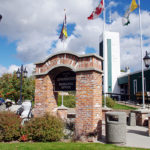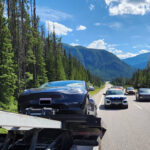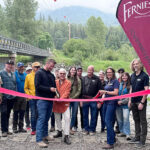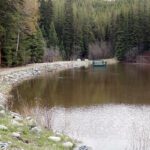Home »

Missing piece would double Waterton Lakes National Park
By Andrea Becker
There’s a very real possibility that Waterton Lakes National Park could more than double in size, and people from across Alberta, B.C. and Montana are gathering in the beautiful mountain park Saturday, September 28, to support the dream.
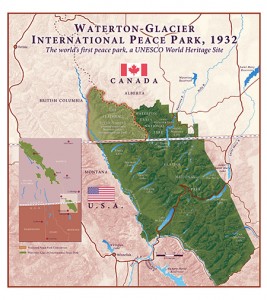 Hosted by some of North America’s leading conservationists, ‘The Missing Piece Rendezvous’ intends to send a message that people are excited and committed to the idea of the expansion of Waterton Lakes into B.C.’s Akamina-Kishinena Provincial Park, also known as the Flathead Valley.
Hosted by some of North America’s leading conservationists, ‘The Missing Piece Rendezvous’ intends to send a message that people are excited and committed to the idea of the expansion of Waterton Lakes into B.C.’s Akamina-Kishinena Provincial Park, also known as the Flathead Valley.
The line-up is a who’s who in renowned conservationists. Held at the historic Waterton Lakes Opera House it will be emceed by Harvey Locke, a long time champion of the effort, and a recognized global leader in the field of parks and large landscape conservation.
Joining him on stage will be Charlie Russell, famed for his work with bear conservation in North America and Russia; Cristina Eisenberg, an American biologist and author who, through her studies on wolf and prey dynamics, is revealing the benefits of this misunderstood animal on the ecosystem; and Sid Marty, author of many books on natural history and western culture. Marty, also a recognized poet and musician, will bring along his band, The Wailbacks.
An additional feature for the event will be the art exhibit Flathead Wild at the Waterton Heritage Center. This incredible collection of paintings and artworks by artists was commissioned specifically to interpret the significance of the Flathead Valley through their creative eye.
As part of the eighth annual Waterton Wildlife Weekend, The Missing Piece Rendezvous plans to bring attention to the achievable goal of this large-landscape conservation initiative.
The Flathead Valley has never been permanently settled, and as a result remains one of the most intact ecosystems remaining in southern Canada. Recent ‘bio-blitzs” and other studies have revealed a rich biodiversity of everything from insects to large carnivores unmatched in North America, as well as a noticeable absence of what is regarded as non-native or invasive flora and fauna.
Efforts have been ongoing to protect this highly threatened area since the 1980s, as it continues to be degraded by logging, trophy hunting, increased road access and quarrying.
The Flathead River Valley is a critical corridor for animals moving north-south along the Rockies. The comparable valley in Montana is already protected in Glacier National Park. The ‘missing piece’, as is evident by a map-view of Waterton and Glacier national parks, would match the western border of Glacier and the northern border of Waterton, with the Flathead River marking the western edge of the new national park. As early as 1911, Waterton’s first superintendent, the colourful character Kootenai Brown, called for the park to be enlarged into what he regarding as a critical ‘breeding ground.’
Not only would it be a new national park, but part of the world’s first International Peace Park. War-weary Canadians and Americans created this new way of reaching hands across borders in 1932, and since this remarkable initiative, UNESCO has recognized the significance of this gift to humanity with a World Heritage designation. It has also been the impetus to create 170 peace parks world-wide.
Visit www.watertonwildlife.com for information on the Waterton Wildlife Weekend and The Missing Piece” Rendezvous. You can also visit www.flathead.ca .
Lead image by Harvey Locke, copyrighted.


